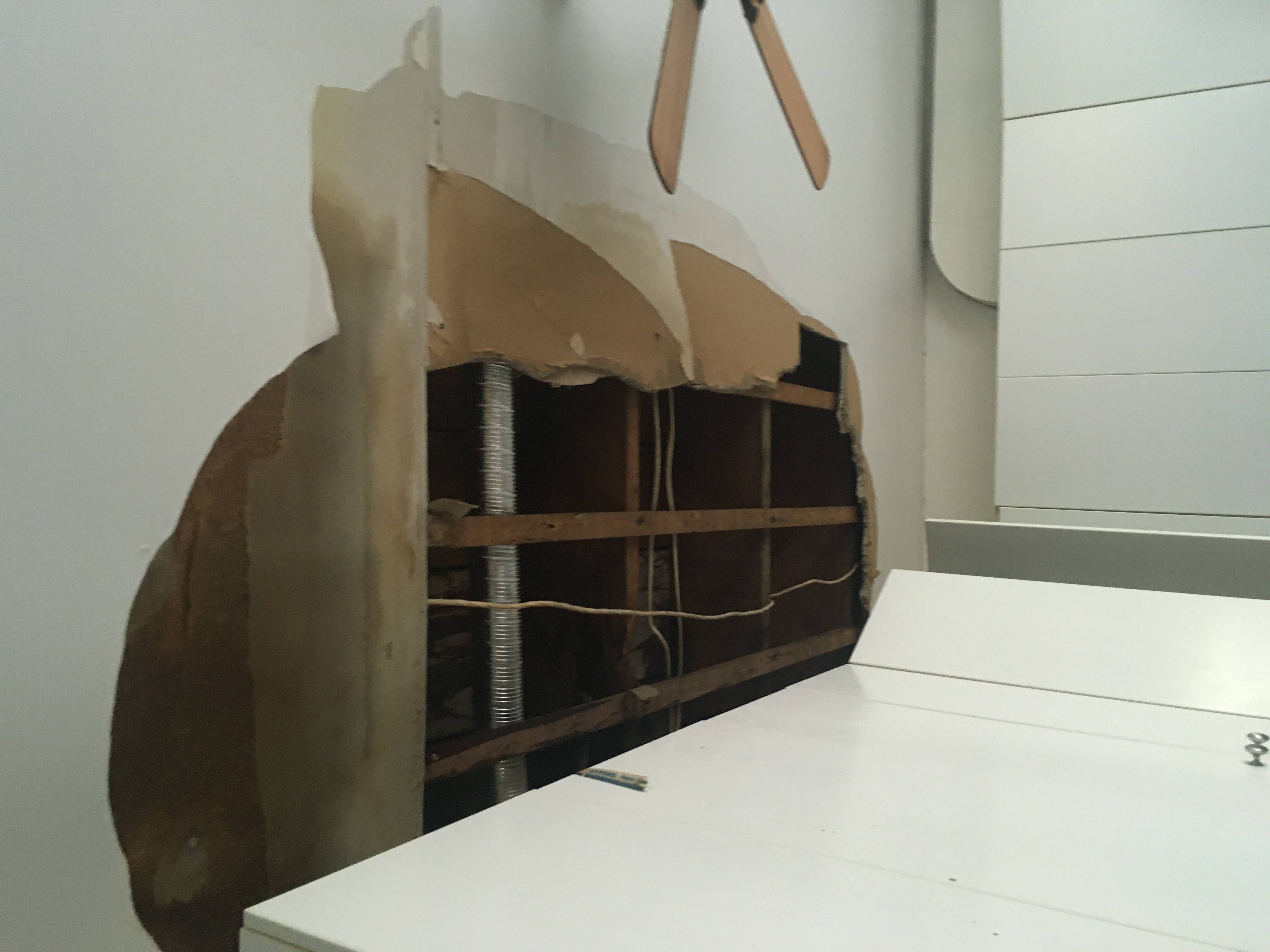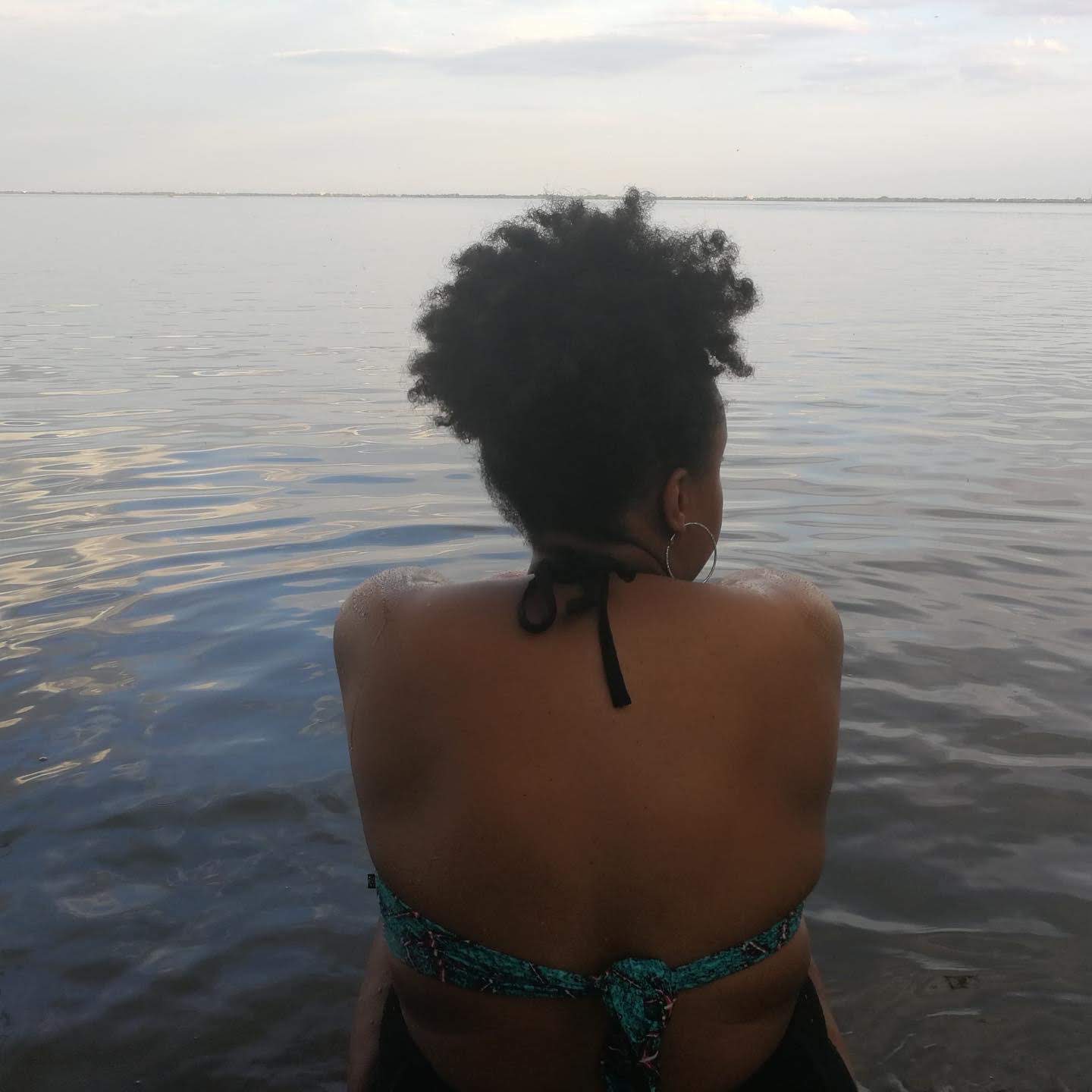
I currently live in Verdun, Montreal. After spending six-year in Toronto, I moved into the neighbourhood with my partner and our two cats in 2019. My apartment is located about 5 minutes from a beautiful trail bordering Saint-Louis lake. The intimacy that I share with this body of water is not unique, but it is mine. Providing a space to catch my breath and refuge when emotionally exhausted, this lake is also an agent of human connections, holding memories of ancestral times. During the pandemic, my proximity to water had more than a mere regenerative effect; it was a vessel that could contain me whole, at times when my body and my mind felt insufficient.
In August 2020, torrential rain caused a sudden relocation. The rainwater buildup on the roof seeped into the triplex, damaging the ceilings, traversing the building’s cavities while picking up dirt deposits and residues of old building materials. Brownish water was leaking from the walls, and we collected the liquid as best we could with pots, cauldrons, and storage bins, sponging the foul-smelling overflow with rags and towels. To my dismay, the scale of the damage reminded me that water is equally an agent of destruction.
During my first curatorial research visit in Sherbrooke, I was intrigued by the murals scattered across the city. This urban revitalization project piqued my curiosity as I observed its visual codes and messages and chosen bits about the municipality’s historical highlights. I wondered about the narratives that were deemed relevant versus those that did not make it onto the city walls. I also noticed a recurring motif in Sherbrooke’s portrayal of itself, water. The group exhibition Les yeux dans l’eau is inspired by the impact of rivers on riverside communities’ identity. This project stems from the Foreman Art Gallery’s geolocation at Bishop’s University in Lennoxville, and the Sporobole Contemporary Art Center, located in downtown Sherbrooke. Surrounded by water, these venues stand on the traditional and unceded territory of the Abenaki Nation and at the junction of the St-François, Magog and Massawippi rivers, carrying histories of inter-species encounters. These rivers contain socio-natural stories interweaving the colonization of land and water.



